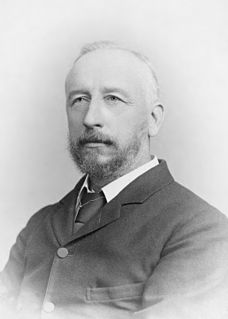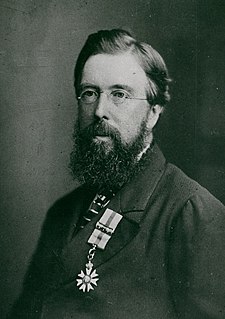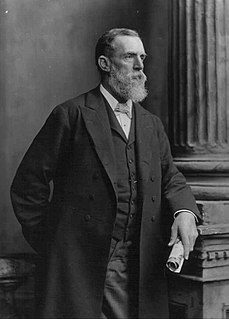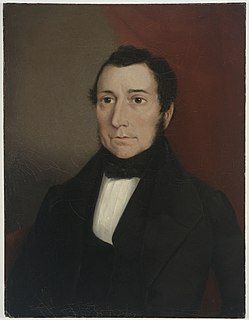Research on the motion of the moon
During the 1880s the discrepancies between the best available lunar tables (published by Hansen in 1857) and observations had become so large that navigators could no longer use the moon's position to determine their longitude accurately. Nevill tackled the problem by first verifying Hansen's treatment of lunar perturbations caused by the direct action of the sun. He then devised an improved method for calculating perturbations caused by Venus. The remaining errors he ascribed to the gravitational pull of the other planets, whose effects were very difficult to calculate. This work was published, among others, in a paper in the Memoirs of the Royal Astronomical Society (1885), [15] describing the corrections required by Hansen's tables. He next studied all available lunar observations since the middle of the 17th century and reduced them to a uniform basis. Comparing these observations to Hansen's tables, he used the discrepancies to derive the amplitudes and periods of appropriate correction terms. After all these improvements the tables provided an excellent fit to all lunar observations made since 1650. [16]
The work was ready for publication by the end of 1894, but no funds were available to have it printed. Each year Nevill urged the Natal government in his annual Report of the Government Astronomer to provide funds for publication, but to no avail. In his report for 1898 he wrote despairingly: The investigations of the errors in the lunar tables have been wrapped up in brown paper, tied up with red tape, and put away on a shelf until such time as a vote can be obtained to publish it… [17] The next year disaster struck when the manuscript was damaged during a rainstorm owing to a leak in the observatory's roof. In subsequent years similar work was done by others, notably E.W. Brown in the United States, M. Radau in France, and P.H. Cowell in Britain, who received the credit. In 1907 Nevill related this sad history in his presidential address to Section A of the South African Association for the Advancement of Science. [18]
Other scientific work
Nevill's other astronomical work included the accurate determination of the observatory's latitude and longitude, first for astronomical purposes and then for the geodetic survey of southern Africa, and regular transit observations for the provision of time signals. A larger collaborative project, carried out from 1886 to 1896, involved the comparison of the declination of stars based on observations made in the northern and southern hemispheres. During his early years in Natal, under the name E.N. Neison, he published a popular book entitled Astronomy: a simple introduction to a noble science (London, 1886). He also made a study of ancient eclipses, on which he read a paper at the joint meeting of the British and South African Associations for the Advancement of Science in 1905. [19]
In addition to the regular meteorological observations made at the observatory the staff was responsible also for analysing and publishing meteorological observations made elsewhere in Natal. Thus by 1900 there were 31 stations that submitted their observations to the observatory on a monthly basis. [20] In 1908 Nevill wrote an article on the rainfall in Natal for the Natal Agricultural Journal, in which he identified an 18-year rainfall cycle. Rendell also published a paper on the rainfall at Durban in the Quarterly Journal of the Royal Meteorological Society in 1906. [21]
The staff also analysed tidal observations made during 1884–1888 and compiled tidal tables for Durban Harbour. By 1903, these had still not been printed and by that time the entrance to the harbour had changed so much that more recent tidal observations needed to be analysed, for which there were no funds. [22] From 1893 daily observations of the magnetic declination were made at the observatory. In November 1887 Nevill was appointed also as Government Chemist and Official Assayer for Natal, which further reduced the time available for astronomical research. His chemical work was mainly of a routine nature and included analyses of geological samples for gold and other metals, analyses of soil samples for agricultural purposes, the examination of high explosives and detonators, and toxicological investigations.

James Glaisher FRS was an English meteorologist, aeronaut and astronomer.

Thomas Henderson FRSE FRS FRAS was a Scottish astronomer and mathematician noted for being the first person to measure the distance to Alpha Centauri, the major component of the nearest stellar system to Earth, the first to determine the parallax of a fixed star, and for being the first Astronomer Royal for Scotland.

Sir David Gill was a Scottish astronomer who is known for measuring astronomical distances, for astrophotography, and for geodesy. He spent much of his career in South Africa.
Edmund Neison FRS FRAS, whose real name was Edmund Neville Nevill, wrote a key text in selenography called The Moon and the Condition and Configuration of its Surface in 1876 and later set up the Natal Observatory in Durban, Natal Province. He also wrote a popular book on astronomy some years after immigrating to Durban.

Robert Thorburn Ayton Innes FRSE FRAS was a Scottish astronomer best known for discovering Proxima Centauri in 1915, and numerous binary stars. He was also the first astronomer to have seen the Great January Comet of 1910, on 12 January. He was the founding director of a meteorological observatory in Johannesburg, which was later converted to an astronomical observatory and renamed to Union Observatory. He was the first Union Astronomer. Innes House, designed by Herbert Baker, built as his residence at the observatory, today houses the South African Institute of Electrical Engineers.
Charles Edward Burton was a British-born Irish astronomer.

Union Observatory also known as Johannesburg Observatory (078) is a defunct astronomical observatory in Johannesburg, South Africa that was operated between 1903 and 1971. It is located on Observatory Ridge, the city's highest point at 1,808 metres altitude in the suburb Observatory.

Sir Charles Todd worked at the Royal Greenwich Observatory 1841–1847 and the Cambridge University observatory from 1847 to 1854. He then worked on telegraphy and undersea cables until engaged by the government of South Australia as astronomical and meteorological observer, and head of the electric telegraph department.

William Hammond Wright was an American astronomer and the director of the Lick Observatory from 1935 until 1942.
Lindsay Atkins Eddie FRAS was a South-African amateur astronomer, known for his observations of Venus, Mercury and Mars and 21 comets. He was elected a fellow of the Royal Society of Astronomers in 1880. He saw active military service in South Africa and his final rank was that of a Major.

Harry Escombe was a South African statesman.

The Sydney Observatory is a heritage-listed meteorological station, astronomical observatory, function venue, science museum, and education facility located on Observatory Hill at Upper Fort Street, in the inner city Sydney suburb of Millers Point in the City of Sydney local government area of New South Wales, Australia. It was designed by William Weaver (plans) and Alexander Dawson (supervision) and built from 1857 to 1859 by Charles Bingemann & Ebenezer Dewar. It is also known as The Sydney Observatory; Observatory; Fort Phillip; Windmill Hill; and Flagstaff Hill. It was added to the New South Wales State Heritage Register on 22 December 2000.

James Dunlop FRSE was a Scottish astronomer, noted for his work in Australia. He was employed by Sir Thomas Brisbane to work as astronomer's assistant at his private observatory, once located at Paramatta, New South Wales, about 23 kilometres (14 mi) west of Sydney during the 1820s and 1830s. Dunlop was mostly a visual observer, doing stellar astrometry work for Brisbane, and after its completion, then independently discovered and catalogued many new telescopic southern double stars and deep-sky objects. He later became the Superintendent of Paramatta Observatory when it was finally sold to the New South Wales Government.

Thomas Robertson Sim was a botanist, bryologist, botanical artist and Conservator of Forests in Natal, best known for his monumental work The Forests and Forest Flora of the Colony of the Cape of Good Hope which appeared in 1907. He was the eldest of five children of John Sim (1824-1901), a noted bryologist and Isabella Thomson Robertson (1823-).

Henry Chamberlain Russell was an Australian astronomer and meteorologist.

William Ernest Cooke, generally referred to as W. Ernest Cooke or informally Ernest Cooke, was an Australian astronomer, credited with a number of important scientific breakthroughs and improved methodologies in astronomical observations and star cataloguing. He was the first Western Australian Government Astronomer and established the Perth Observatory as one of the best equipped and productive establishments of its type in Australia.

Johannes Elias Spurgeon Henkel aka John Spurgeon Henkel, was a South African botanist and forester. He was deeply involved in the conservation of forests in southern Africa and the introduction of exotic species such as Eucalyptus to Zululand.

Elizabeth Brown was a British astronomer and Quaker who specialized in solar observation, especially sunspots and solar eclipses.

The Royal Observatory, Cape of Good Hope, is the oldest continuously existing scientific institution in South Africa. Founded by the British Board of Longitude in 1820, it now forms the headquarters building of the South African Astronomical Observatory.
John Dow Fisher Gilchrist (1866–1926) was a Scottish ichthyologist, who established ichthyology as a scientific discipline in South Africa. He was instrumental in the development of marine biology in South Africa and of a scientifically based local fishing industry.

















